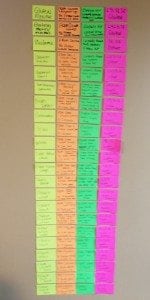[et_pb_section admin_label=”section”]
[et_pb_row admin_label=”row”]
[et_pb_column type=”4_4″][et_pb_text admin_label=”Text”]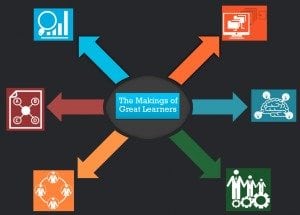 Most established professionals don’t face the same types of challenges as students. We (as professionals) have the luxury of primarily operating from places of competence and strength. If we are in-class educators, we teach in the ways that are most comfortable to us. Learning support professionals use strategies that are most congruent with their approach to learning.
Most established professionals don’t face the same types of challenges as students. We (as professionals) have the luxury of primarily operating from places of competence and strength. If we are in-class educators, we teach in the ways that are most comfortable to us. Learning support professionals use strategies that are most congruent with their approach to learning.
What’s behind highly effective professionals’ success? If we understand what makes us productive professionals, then we can help students become productive learners. In many ways, the same cognitive processes that drive our work performance are also at the core of student learning and academic success. By understanding the factors that make us strong, we can strengthen our students.
Metacognition, Models, Metrics
Highly successful professionals have a high degree of metacognitive awareness.
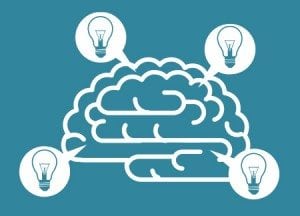 Metacognition, which is loosely referred to as “thinking about our thinking,” has been cited widely as a critical factor in academic achievement, work performance and personal success (Hacker, 1998). When it comes to performance, persons who measure high in metacognitive awareness are better able to determine goals, align their thinking to meet goals, calibrate their proximity to meeting goals and accurately assess whether goals have been met. This type of cognitive continuity creates the conditions for success.
Metacognition, which is loosely referred to as “thinking about our thinking,” has been cited widely as a critical factor in academic achievement, work performance and personal success (Hacker, 1998). When it comes to performance, persons who measure high in metacognitive awareness are better able to determine goals, align their thinking to meet goals, calibrate their proximity to meeting goals and accurately assess whether goals have been met. This type of cognitive continuity creates the conditions for success.
Professionals with high metacognitive skills get the job done, while those who lack metacognitive awareness are simply always doing the job. There is a world of difference between these two types of workers! Many people can do the job. Metacognitively empowered professionals are able to sift through the endless flow of less relevant information and insignificant tasks. They remain focused on the core driving goals that most affect their bottom line. As a result, they do the things that must be done.
Likewise, metacognitively empowered students are able to deliberately exercise their thinking skills to understand the essence of a subject or topic. For example, these students don’t only account for the content that they must study; they also consider the various ways that they will need to think about the content to sufficiently learn the material. This process requires that they interpret the expected outcomes, align their thinking to those outcomes, and monitor their processing along the way. Most importantly, they must correctly assess whether they’ve met these outcomes prior to being tested. This type of thinking requires a high degree of metacognitive control.
Textbook comprehension is another task where metacognitively aware students outperform their peers (Flippo, 2009). Textbook comprehension consistently ranks as the most daunting task for students. Metacognitively aware students understand that each textbook chapter is organized around a handful of ideas. They know that the text is not those ideas; rather it used to help readers grasp those ideas. Consequently, they don’t get lost in the text. They use the text to learn the essential information.
For example, I was once working with a group of struggling students who were complaining about the number of resources their professor had assigned. They were convinced that the volume of information was simply too great for one class. I sought insight from a student who was performing well in the class. This student affirmed the students’ beliefs that they were assigned numerous books. However, the student said that she did not read every word of each book. In fact, she stated that only a third of the longest book was new information; the remaining two-thirds simply provided examples of the ideas expressed in the beginning pages of the book. She said once she grasped the main ideas, there was no need to read the rest of the book.
The successful learner read to comprehend, while the struggling students were reading to finish. As a result, the frustrated students were spending far too much time reading. Their successful peer realized the point at which she had learned the essence of the ideas that the author was expressing, and when the supporting information was no longer useful. Consequently, she was able to read less, but understand more – a common experience of students with a high degree of metacognitive awareness.
Models
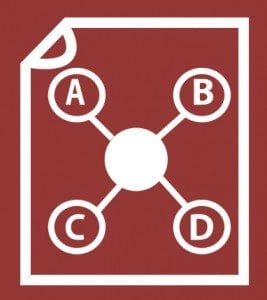 Effective professionals have mental representations of the ideal outcomes and the path that is required to reach those outcomes. These models can be explicit; however, they are most often implicit – embedded in the mind. Working models provide a framework for professionals to efficiently navigate their way from where they are at any stage of a project, task or job to the end product.
Effective professionals have mental representations of the ideal outcomes and the path that is required to reach those outcomes. These models can be explicit; however, they are most often implicit – embedded in the mind. Working models provide a framework for professionals to efficiently navigate their way from where they are at any stage of a project, task or job to the end product.
Great learners rely upon mental models to ensure that they generate the kind of thinking necessary to produce meaningful outcomes. Good students – those who are capable and studious, but struggle in rigorous courses – operate on a model that produces shallow outcomes. They need a model to help them move from surface interactions to deep learning.
Good students often equate memorization with intelligence. In fact, when conducting workshops with students throughout the country, they willfully credit their academic success to strong memorization skills. These students’ entire studying/learning regimen is organized around how much and how well they memorize. They have become excellent knowledge acquirers, but have no framework for developing knowledge beyond the acquisition stage.
The image below is a typical example of good students at work.
The students who created these post-it notes have invested considerable time in lifting the information from their resources and organizing them by color. The next step, undoubtedly, is to see if they can recall the information without the visual prompt. The color-coding acts as an important safeguard. If they happen to draw a blank on the test, they will feverishly search their mind to remember the color associated with the item they are attempting to recall. They don’t realize that this model is likely to fail them because memorized knowledge is both fragile and fleeting.
On the other hand, great learners organize their studying around meaning making, not memorization. Rather than spending time jotting down disconnected facts and using their memory as the sole cognitive tool to acquire content, they truly learn it. As one colleague advises her students, “The more you understand, the less you have to memorize.”
Great learners might organize their studying routine around the following key questions:
This example was submitted by Leslie Foley, Director of Academic Assistance, Pacific Lutheran University, Tacoma, WA, during one of my Transforming Good Students into Great Learners webinars.
This approach orchestrates a variety of cognitive skills rather than the sole skill of memorization. As a result, the learner generates a much more complex and deeper set of interactions with the material.
Leslie and other educators and students have used the ThinkWell-LearnWell™ Diagram as an effective model for navigating from shallow thinking to deep interactions with academic content. College professors and high school teachers use the diagram as a model for instructional planning. Learning assistant professionals and guidance counselors use the diagram for professional development initiatives and improving student performance. Students use it to manage their thinking, ensuring that they reach outcomes that are sufficient for their tasks.
Metrics
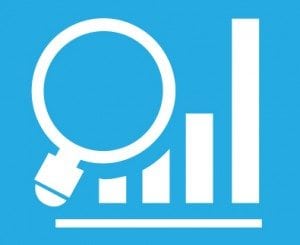 Finally, professionals must have proper metrics. Metrics are standards by which we measure our performance. Metrics are always linked to what we deem valuable. For example, a business that equally values profits and job creation will use both of these measures as metrics in evaluating its performance. Learning assistance programs that value student learning use student interaction with content and performance as a metric rather than the number of students who use the services (which measures traffic).
Finally, professionals must have proper metrics. Metrics are standards by which we measure our performance. Metrics are always linked to what we deem valuable. For example, a business that equally values profits and job creation will use both of these measures as metrics in evaluating its performance. Learning assistance programs that value student learning use student interaction with content and performance as a metric rather than the number of students who use the services (which measures traffic).
Students rely upon metrics when studying. Unfortunately, many students are unaware of the metrics that guide their learning. As students study, they generate confirmations about what they’ve learned. These feelings of knowing or “senses of I-got-it-ness” are used to both guide and gauge their learning.
One common faulty piece of advice that leads students to set improper metrics is “study three hours for every hour of class time.” I’m convinced that this well-intentioned advice contributes to many students’ problems. By defining students’ studying in hours, it establishes time as a metric for learning. As a result, students measure how well they’ve studied and how much they’ve learned by the number of hours spent studying. After they’ve punched their three-hours-or-more clock, they feel accomplished. However, when asked what they now know as a result of their studying, students often are unable to articulate what they’ve learned. But they know how long they spent learning it!
The Learning Sufficiency Diagram was created to help students, and learner-centered educators, determine the metrics that guide them at each level of interaction. If we can help students adjust their metrics, we can fundamentally change their interaction with content.
It’s clear why researchers have found that students who are more metacognitively aware will outperform their peers and that employees with higher degrees of metacognitive activity are promoted more frequently than their counterparts (Flippo, 2009) (Hacker, 1998).
Related Links
In the meantime, check out this conversation with students who have experienced this first hand: http://bit.ly/1aZ3ohA.
You can also view short stories shared by colleagues about their experiences at:http://thelearnwellprojects.com/interaction/.
Related Articles:
- What is Academic Rigor to Students: A View From the Other Side
- Adjusting to Rigor: Changing Students Default Settings
- Why Good Students Do Bad in College: Impactful Insights
Most Recent Article:
Works Cited
Flippo, R. C. (2009). Handbook of College Reading and Study Strategy Research, 2nd Edition (2nd ed., Vol. 2). New York, New York, USA: Routledge.
Hacker, D. D. (1998). Metacognition in educational theory and practice (1st ed.). Mahwah, NJ, USA: L. Erlbaum Associates.
[/et_pb_text][/et_pb_column]
[/et_pb_row]
[/et_pb_section]

